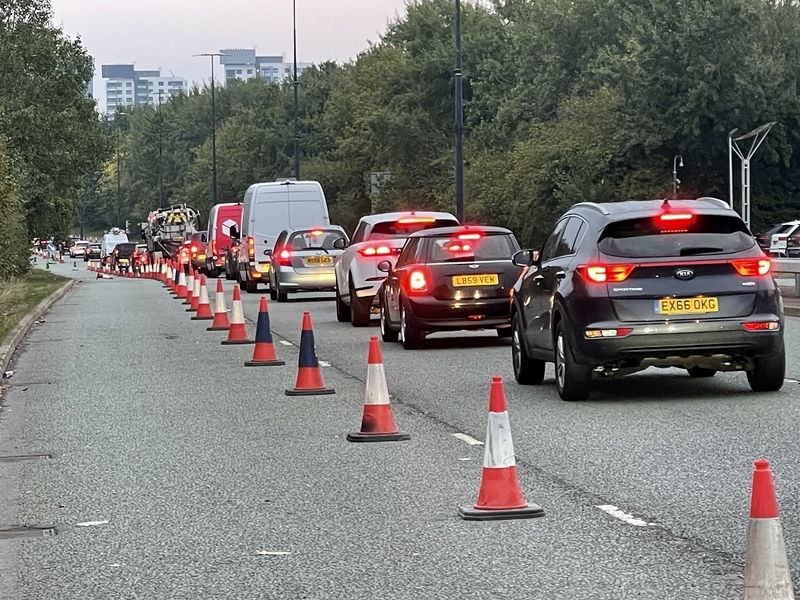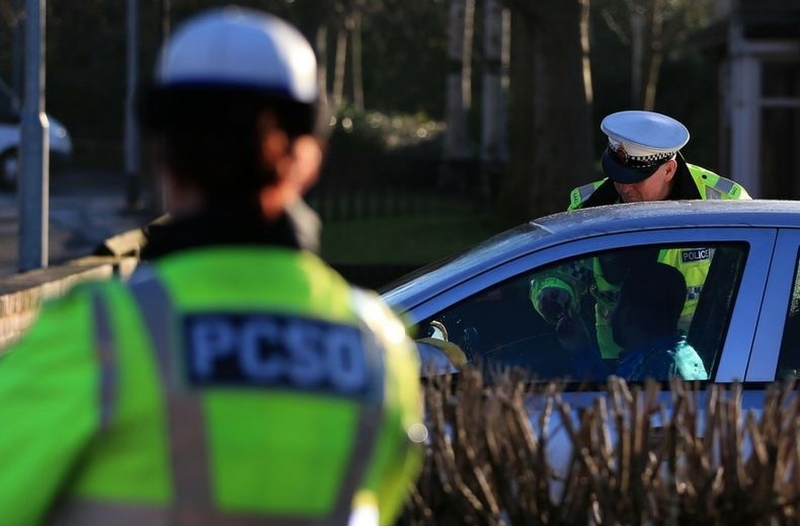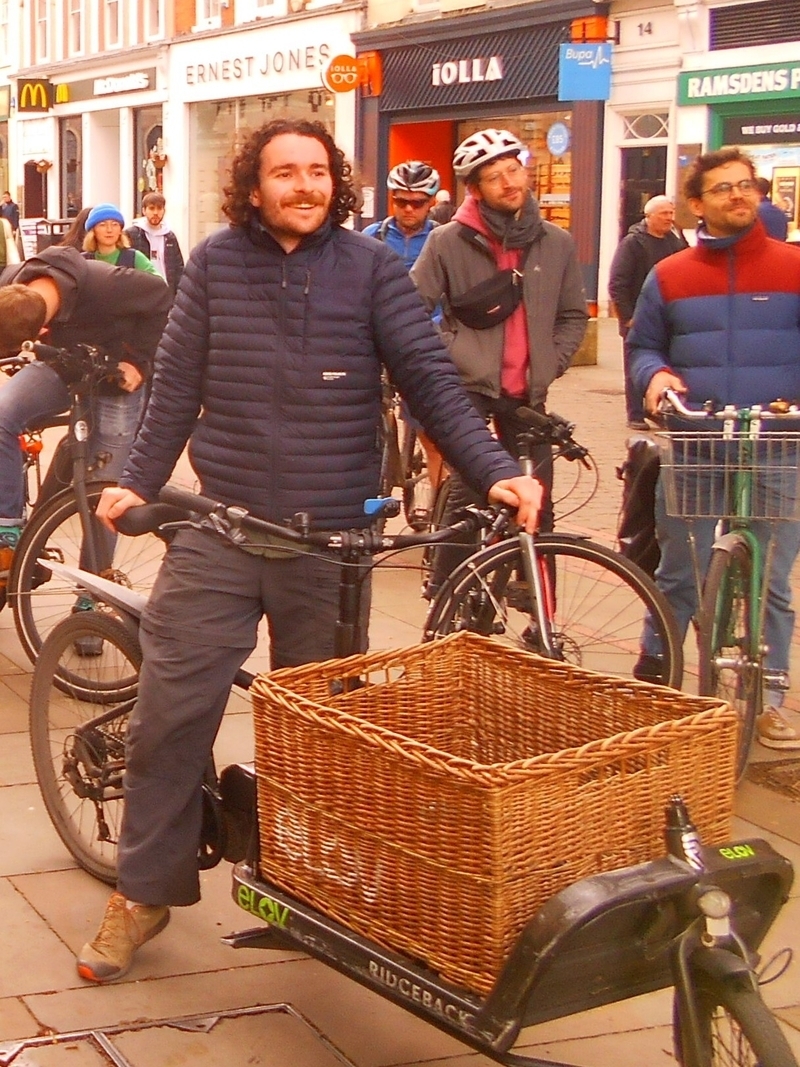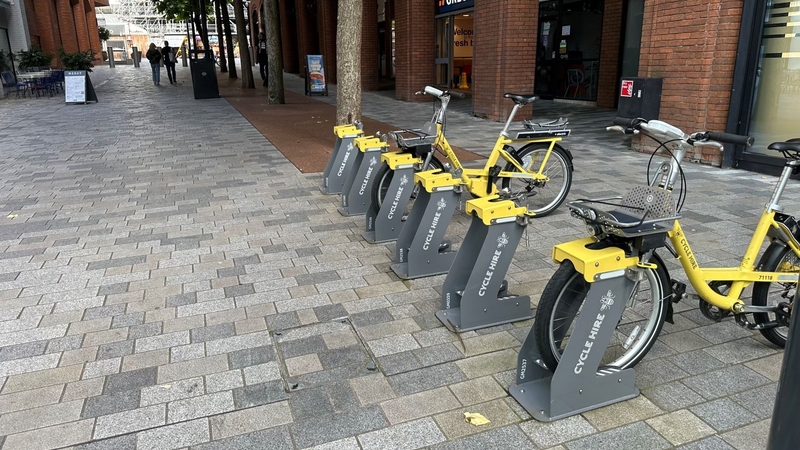Jonathan Schofield on how tension on city streets is not all one-way traffic
A battle joined
Tensions between bikes, pedestrians and vehicles seem to have risen in the last few years. As traffic-calming increases in the city centre and suburbs the bad habits of some cyclists on traditional and electric bikes are coming under closer scrutiny particularly by pedestrians. Why do so many cyclists break the rules by ignoring red lights, cruising down one-way streets and speeding along busy pavements? And is this a one-eyed view of the relationship?

GMP is asked a question
One reader, who feels he’s been dodging bikes for years, was recently almost mown down by a Deliveroo cyclist on a pavement. Whether it's food delivery folk or other cyclists these instances have become part of office chatter.
Our vexed reader decided to ask a question, last month, of Greater Manchester Police (GMP) through the Freedom of Information Act (FOIA).
He asked: ‘I’d like to know how many fines have been issued to cyclists for cycling in Manchester city centre on pavements, high speed riding, breaching red traffic light signals and cycling the wrong way on one-way streets during the financial year 01/04/2022 to 31/03/2023?’
GMP said it didn't have the data for the city centre alone but it did have data for the whole City of Manchester. This massively increases the target population of the FOIA to 552,000 and creates an area probably twelve times larger.
GMP delivered the answers in two ways and, by the way, the definition of 'pedal cycles' includes both traditional cycles and e-bikes.
1) How many fines were issued for pedal cycles involved in red light offences or travelling the wrong way on a one-way street?
The figure was ZERO.
2) How many fines were issued for pedal cycles riding on a ‘footpath/ causeway by the side of a road/ set apart for the use of foot passengers’?
The figure was FOUR.

‘Rules that legally 'must' be followed’
So Confidentials.com asked GMP: ‘What is the policy of GMP to biking offences? Do the police only follow up on specific complaints or are such offences tolerated as not being important given there are so many other more major offences which must take precedence?’
The GMP reply was somewhat inscrutable: ‘Officers will treat cyclists the same as motorists if found to have committed an offence and can deal with them in a variety of ways, ranging from verbal advice to prosecution.’
They then sent a helpful link: Cycle safety | Greater Manchester Police (gmp.police.uk)’
The first paragraph of this states: ‘The Highway code provides rules that legally 'must' be followed and advice that 'should' be followed to keep cyclists safe on the roads. A breach of these rules is a criminal offence and can be used as evidence in both criminal and civil proceedings.’
That’s pretty clear. It's saying: "Hey, cyclists, don’t break the law. There are rules that legally must be followed." The problem is, as that FOIA request reveals, there's rarely any sanction if cyclists ignore the rules.
As a comparison, there’s another helpful FOIA request on the GMP website about fines for motoring offences. One of the questions reads: ‘as a result of committing a motor offence in your authority how many…fines were accepted by motorists?'
For financial year 2022- 2023 there were 43,204. Cycling fines amount to 0.001% of this. It’s clear where GMP’s priorities lie. Yet, given the far greater threat motor vehicles carry in terms of death and injury it seems sound policy to go after motorists rather than pavement-bothering cyclists who might be an irritant but are extremely unlikely to maim or kill.

Bad behaviour is not a one-way street
Let’s switch the argument here.
For every person who has experience of a cyclist flashing past them on the pavement or zooming the wrong way down a one-way street or ignoring a traffic light then every cyclist in the land has a story of bad behaviour from pedestrians, cars, buses and lorries (and other bikes for that matter).
Harry Gray is a campaigner for walkable cities and bike lanes. He says: “It's important to put into perspective how policing on the roads is managed and consider what mode of transport is carrying the most danger."
He points Confidentials.com to the stats from Greater Manchester's Vision Zero project headed up by multiple gold medal winning cyclist Dame Sarah Storey.
These stats show that in 2021 in Greater Manchester 'there were 28 pedestrians killed and 217 serious injuries as a result of road collisions. Meanwhile, there were five cyclist fatalities and 129 serious cyclist casualties in the same period, plus 10 motorcyclist deaths and 106 serious casualties. In addition there were 29 fatalities amongst car occupants (which includes drivers and passengers of private vehicles, taxis and minibuses) along with 305 casualties suffering serious injuries.'
Harry Gray again: "All of the pedestrian deaths were caused by motor vehicles. Deaths due to cycling are incredibly rare and it is right resources should be focussed on areas where deaths can be reduced as per GM Vision Zero."

Bikes that aren't 'pedal cycles' are the big problem
E-bikes have become a bugbear for the public. Great on the road but not so great on pavements given they are faster and heavier than traditional pedal bikes.
The problem is many of the pavement speeding bikes are not e-bikes at all, they might look like an e-bike but they are technically mopeds or motorbikes.
This is where it gets complicated. The legal definition, as stated above, of a 'pedal cycle' includes e-bikes. But there's a limit. If certain criteria aren't met the e-bike becomes a moped or motorcycle.
Here are the legals. Deep breath.
For an e-bike to qualify as an unlicenced 'pedal cycle' it must display:
a) The power output or manufacturer of the motor
b) The battery’s voltage or maximum speed
c) And it can only have a maximum power output of 250 watts and a maximum speed of 15.5mph.
If the e-bike fails to meet these criteria then you're looking at a vehicle that must be licenced, taxed and insured. Many e-bikes have been adapted to travel at speeds up to 40mph and given a much bigger power output. These are often easy to spot; masses of masking tape often unmasks them, so to speak.
“Illegal motorbikes are a concern,” says Gray. “Remember these vehicles are usually not pedal cycles due to their illegal modification, and shouldn't be categorised as such.”
South Wales Police in July this year took action against illegal bikes being ridden on pedestrianised streets and seized seventeen.
The police said it was working with Cardiff Council to "tackle the problems of illegal electric bikes being ridden through pedestrianised areas of Cardiff city centre".
As the report also read: 'Officers have warned owners of the seized bikes, they now have two weeks to produce the relevant documentation to be able to recover them otherwise they will be scrapped.'
This raised a moral question. Several of the bikes were taken from delivery drivers who no doubt lost their livelihood. Yet, they were breaking the law so maybe they should be spared our sympathy.

Mixed messages
Running through all of the conversations are bewildering contradictions.
Take the Beryl bike scheme in Manchester
Where Brazennose Street meets Lincoln Square it's fully pedestrianised. Yet Transport for Greater Manchester (TfGM) have placed Beryl bike station right there. So how are people hiring a bike to move it the considerable distance to Princess Street or Deansgate? Walk alongside it and wheel it? These are heavy bikes and easier to ride than wheel, so people will, inevitably, ride them. Beryl and TfGM obviously didn't think the positioning of such stations was an issue.
It's almost as if in the ‘active travel’ departments of transport bodies riding on the pavement is promoted. No wonder the police are hardly likely to fine more cyclists for riding on the pavement when there's such confusion.

A confession and a conclusion
I’m a cyclist and I confess I have ridden through red lights, gone down one-way streets and cycled on pavements, but I swear I’ve only ever done it carefully and slowly.
Maybe the law needs looking at. On a bike a cyclist is unprotected, exposed, unlike car drivers, so naturally cyclists take steps to mitigate these circumstances by breaking the rules.
Harry Gray agrees about changing the law and says: “In many countries with lower pedestrian and cycling deaths than the UK it is legal to cycle contraflow down a one-way street as well as turning right on red. Many cyclists believe these measures would enable safer cycling and would welcome exploring such measures.”
Until that happens others argue an offence is an offence and a ‘zero tolerance’ policy would encourage better behaviour. Home Secretary Suella Braverman seems to favour this approach with her recent statement about every theft needing to be investigated. Of course, Gavin Stephens, chair of the National Police Chiefs' Council, immediately warned her how pressures on policing were having an impact on the criminal justice system and that Chief Constables have to prioritise.
The stats from Manchester reveal how far down the GMP priority lists are cycling offences. Zero tolerance to zero enforcement.
So, at present if you are cut up by a cyclist or e-bike while crossing the road or squashed by a bike against a wall on a one-way street, there’s no chance of a legal sanction coming the way of the offender.
But look on the bright side, if you’re upended by a cyclist on a pavement then the offender might be prosecuted and fined.
Well on four days out of 365.
GMP it appears have bigger fish to fry.
And we've not even mentioned e-scooters yet...
If you liked this you might like this:
Euro Car Parks fined for building neglect
Manchester Airport hits back at 'worst' tag
Stockport: is it on the rise?
Get the latest news to your inbox
Get the latest food & drink news and exclusive offers by email by signing up to our mailing list. This is one of the ways that Confidentials remains free to our readers and by signing up you help support our high quality, impartial and knowledgable writers. Thank you!
















